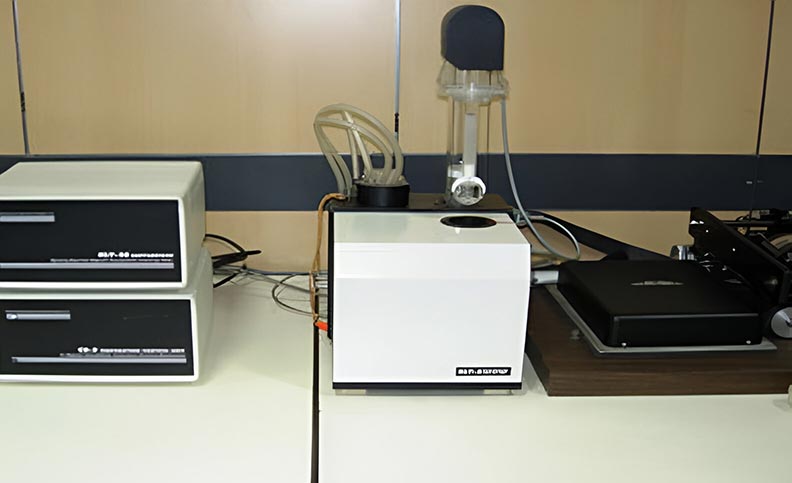
केएलवाई-3 कप्पाब्रिज

Model/Make
| Model | KLY-3S |
|---|---|
| Make | AGICO, Czech |
Specifications
| Specimen Size (1) | Spinning Specimen | Static Specimen | ||
|---|---|---|---|---|
| Cylinder | Diameter | 25.4 mm (+0. 2 , -1. 5) | 25.4 mm (+1. 0, -1. 0) | |
| Length | 22.0 mm (+0. 5 , -1. 5) | 22.0 mm (+2. 0, -2. 0) | ||
| Cube | 20 mm (+0.5 , -2. 0) | |||
| Cube | 20 mm (+0. 5 , -1. 5) | 23 mm (+0.5 , -2. 0) | ||
| 26 x 25 x 19.5 mm3 | ||||
| ODP box | 40 cm3 | |||
| Fragments | (bulk. susc.) | |||
| Pick-up coil inner diameter | 43 mm | |||
| Nominal specimen volume | 10 cm3 | |||
| Operating frequency | 875 Hz | |||
| Field intensity | 300 Am-1 | |||
| Field homogeneity | 0.2% | |||
| Measuring range | 0 to 0.2 (SI) | |||
| Sensitivity (typical) Bulk measurement | 3 x 10-8 (SI) | |||
| AMS measurement (spinning specimen) | 2 x 10-8 (SI) | |||
| Accuracy within one range | 0.1% | |||
| Accuracy of the range divider | 0.3% | |||
| Accuracy of the absolute calibration | 3% | |||
| HF Electromagnetic Field Intensity Resistance | 1 Vm-1 | |||
| Power requirements | 240, 230, 120, 100 V 10% | |||
| 50 / 60 Hz | ||||
| Power consumption | 45 VA | |||
| Operating temperature range | + 15 to + 35 oC | |||
| Relative humidity | max 80% | |||
Principle
In principle the instrument represents a precision fully automatic inductivity bridge. It is equipped with automatic zeroing system and automatic compensation of the thermal drift of the bridge unbalance as well as automatic switching appropriate measuring range. The measuring coils are designed as 6th-order compensated solenoids with remarkably high field homogeneity.
Description
The KLY-3 version measures the AMS of a static specimen fixed in the manual holder. In the static method, the same as in KLY-2 bridge, the specimen susceptibility is measured in 15 different orientations following rotatable design. From these values six independent components of the susceptibility tensor and statistical errors of its determination are calculated using software SUSAM. The specimen positions are changed manually during measurement.
The KLY-3S version measures the AMS of a spinning specimen fixed in the rotator. In the spinning method, the specimen rotates with small speed of 0.5 r.p.s. inside the coil, subsequently about three axes. From these data, the deviatoric susceptibility tensor can be computed. This tensor carries information only on anisotropic component of the specimens.
Application
The KLY-3S / KLY-3 Kappabridge is probably the world’s most sensitive commercially available laboratory instrument for measuring bulk magnetic susceptibility and anisotropy of magnetic susceptibility (AMS).

